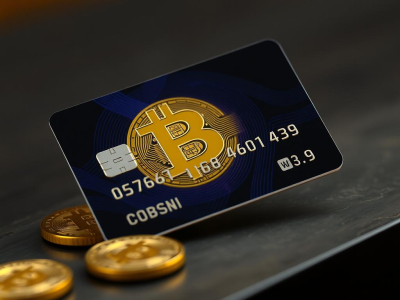
For those engaged in the crypto space, utilizing multi-currency debit cards can streamline payments across various platforms. These cards allow seamless conversion between different wallets, making transactions efficient and versatile. When selecting a card, focus on its specific features, such as supported currencies, transaction fees, and user experience.
The ability to hold multiple currencies in one card presents an opportunity for users to capitalize on exchange rates and conduct transactions without the hassle of converting funds manually. Understanding how these cards interact with your existing wallets can optimize your financial management, providing both flexibility and convenience in daily spending.
When evaluating options, pay close attention to the exchange mechanisms employed by each card provider. Some offer real-time conversions at competitive rates, while others may impose hidden fees that diminish potential savings. An informed choice will enhance your ability to navigate the complexities of digital finance.
Understanding Currency Conversion Fees
Evaluate the currency conversion fees associated with crypto debit cards to maximize your payment efficiency. These fees can significantly affect transaction costs, especially when using multi-currency features.
- Fee Structure: Familiarize yourself with how each card issuer calculates conversion fees. Some may charge a flat fee per transaction, while others apply a percentage based on the transaction amount.
- Exchange Rate Markup: Be aware that many providers add a markup to the market exchange rate, which can inflate costs. Compare rates offered by different cards for better deals.
- Wallet Compatibility: Ensure your wallets support the currencies you plan to use. Incompatible wallets might trigger additional conversion fees during transactions.
- Transaction Type: Different types of payments (e.g., point-of-sale vs. online) may incur varying fees. Understand these distinctions to avoid unexpected charges.
- Loyalty and Rewards Programs: Some cards offer reduced conversion fees for loyal customers or specific spending categories. Investigate such benefits before selecting a card.
By understanding these elements, users can make informed decisions and reduce unnecessary expenses related to currency conversions in their crypto debit card transactions.
Choosing the Right Crypto Card
Focus on cards that support multiple currencies and allow seamless transactions across various wallets. Look for those with low or no exchange fees to minimize costs during payments.
Evaluate the card’s compatibility with popular cryptocurrencies. A versatile card offers flexibility when managing different assets, ensuring smoother exchanges and transactions.
Review the rewards program associated with the debit card. Some providers offer cashback or incentives for crypto spending, which can enhance overall value.
Check security features such as two-factor authentication and transaction alerts. A secure environment is paramount when dealing with digital currencies.
Consider customer support options and community feedback. Reliable support can be crucial if issues arise during transactions or wallet management.
Assess how well the card integrates with existing wallets and exchanges you use. A streamlined process enhances usability and convenience in managing your crypto portfolio.
Finally, read the terms regarding currency conversion rates. Understanding these details will help you avoid unexpected charges during payments or exchanges.
Managing Multiple Wallets Efficiently
Utilize wallet management tools that aggregate balances across various wallets. These features simplify tracking and provide a clear overview of your crypto assets without switching between platforms.
Implement a systematic naming convention for your wallets. This practice aids in identifying purpose-specific wallets, such as those dedicated to savings or daily transactions, reducing confusion during payments.
Regularly review transaction history for each wallet. Monitoring exchange rates during these reviews can help optimize the timing of transactions, minimizing fees associated with currency conversion.
Automate transfers between wallets when certain thresholds are met. For instance, set up alerts for when a specific crypto reaches a target price; this allows for timely exchanges and optimized asset distribution.
Consider using multi-signature wallets for added security. This feature requires multiple approvals before executing any transaction, enhancing protection against unauthorized access while managing multiple currencies.
Stay informed about updates and new features from your crypto debit card provider. Knowing which cards offer better integration with specific wallets can lead to more efficient payment processing and reduced transaction costs.
Familiarize yourself with the supported currencies within each wallet and card combination. Understanding compatibility helps avoid unnecessary exchange fees when making payments across different networks.
Security Features to Consider
Prioritize two-factor authentication (2FA) for your crypto debit cards. This feature significantly reduces the risk of unauthorized access by requiring a second form of verification, such as a code sent to your mobile device during transactions.
Look for cards that offer biometric security options, like fingerprint or facial recognition. These provide an additional layer of protection against fraudulent activities and enhance user experience.
Ensure that the card provider has robust encryption protocols in place for transaction data. End-to-end encryption safeguards sensitive information during payments and exchanges, making it difficult for hackers to intercept data.
Consider the card's ability to freeze or deactivate accounts instantly via a mobile app. This feature allows immediate action if you suspect any suspicious activity on your account, minimizing potential losses.
Research whether the card offers insurance or guarantees against theft or fraud. Some providers may cover losses incurred from unauthorized transactions, adding peace of mind when using multi-currency options.
Evaluate the provider’s compliance with regulatory standards and their history regarding security breaches. A reputable company will have transparent policies and a track record of maintaining secure systems.
Assess transaction monitoring features that alert users to unusual activities in real time. Proactive monitoring can help detect fraud early, allowing users to respond swiftly.


You can be the first!